Pro-repair macrophages driven by CGRP rescue white matter integrity following intracerebral hemorrhage
- PMID: 40544251
- PMCID: PMC12182684
- DOI: 10.1186/s12974-025-03483-7
Pro-repair macrophages driven by CGRP rescue white matter integrity following intracerebral hemorrhage
Abstract
Background: Intracerebral hemorrhage (ICH) triggers a dynamic immune response involving macrophages, However, the functional heterogeneity of these cells and the mechanisms through which they promote repair remain unclear. Although the neuropeptide CGRP has been shown to modulate macrophage phenotypes in other pathological contexts, its role in ICH recovery and white matter repair remains unexplored.
Methods: Single-cell RNA sequencing (scRNA-seq) of CD45 + cells from ICH mice (GSE167593 and GSE230414 datasets) identified macrophage subsets. Flow cytometry, diffusion tensor imaging (DTI), behavioral assays, and immunofluorescence validated macrophage dynamics and white matter (WM) integrity. Bone marrow and skull analyses traced macrophage origins. The role of calcitonin gene-related peptide (CGRP) was tested via intraperitoneal administration in ICH mice, with outcomes assessed through transcriptomics, ultrastructural imaging, and functional recovery.
Results: scRNA-seq revealed sustained accumulation of THBS1 + macrophages post-ICH, correlating with WM repair and neurological recovery. These macrophages exhibited pro-repair and remyelination gene signatures (e.g., Arg1, Tgm2). Bone marrow-derived myeloid cells, particularly skull-resident populations, served as the primary source of THBS1 + macrophages. CGRP, elevated in meninges and bone marrow post-ICH, drove macrophage polarization toward THBS + phenotypes. CGRP administration expanded THBS1-positive macrophages in the bone marrow and brain, improving WM integrity (reduced radial diffusivity, higher fractional anisotropy) and sensorimotor function. Ultrastructural analysis confirmed enhanced myelin regeneration (lower g-ratio) in CGRP-treated mice.
Conclusions: This study identifies a neuroimmune axis wherein CGRP promotes bone marrow-derived THBS1 + macrophages to facilitate WM repair and functional recovery after ICH. Targeting CGRP-macrophage signaling offers a therapeutic strategy to enhance recovery in hemorrhagic brain injury.
Supplementary Information: The online version contains supplementary material available at 10.1186/s12974-025-03483-7.
Keywords: Calcitonin gene-related peptide (CGRP); Intracerebral hemorrhage (ICH); Macrophage; Neuroimmune axis; THBS1; White matter repair.
Conflict of interest statement
Declarations. Ethics approval and consent to participate: All animal procedures were authorized by the Animal Ethics Committee of the Second Affiliated Hospital of Zhejiang University (Approval No. 2020 − 360) and conducted by the Guiding Principles for the Care and Use of Laboratory Animals, as endorsed by the National Science and Technology Committee of China. Consent for publication: All authors have read and approved the publication of this manuscript. Competing interests: The authors declare no competing interests.
Figures

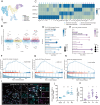
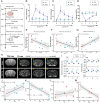
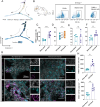
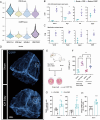
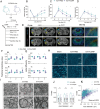
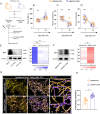

Similar articles
-
Intra-hematomal White Matter Tracts Act As a Scaffold for Macrophage Infiltration After Intracerebral Hemorrhage.Transl Stroke Res. 2021 Oct;12(5):858-865. doi: 10.1007/s12975-020-00870-5. Epub 2020 Oct 22. Transl Stroke Res. 2021. PMID: 33094829 Free PMC article.
-
Calcitonin gene-related peptide promotes epithelial reparative and anticolitic functions of IL-4 educated human macrophages.Am J Physiol Gastrointest Liver Physiol. 2025 Jan 1;328(1):G1-G16. doi: 10.1152/ajpgi.00159.2024. Epub 2024 Oct 8. Am J Physiol Gastrointest Liver Physiol. 2025. PMID: 39378308
-
Calcitonin gene-related peptide-modulated macrophage phenotypic alteration regulates angiogenesis in early bone healing.Int Immunopharmacol. 2024 Mar 30;130:111766. doi: 10.1016/j.intimp.2024.111766. Epub 2024 Mar 7. Int Immunopharmacol. 2024. PMID: 38452411
-
Secondary White Matter Injury Mediated by Neuroinflammation after Intracerebral Hemorrhage and Promising Therapeutic Strategies of Targeting the NLRP3 Inflammasome.Curr Neuropharmacol. 2023;21(3):669-686. doi: 10.2174/1570159X20666220830115018. Curr Neuropharmacol. 2023. PMID: 36043798 Free PMC article. Review.
-
White Matter Injury and Recovery after Hypertensive Intracerebral Hemorrhage.Biomed Res Int. 2017;2017:6138424. doi: 10.1155/2017/6138424. Epub 2017 Jun 7. Biomed Res Int. 2017. PMID: 28680884 Free PMC article. Review.
References
-
- van Asch CJ, Luitse MJ, Rinkel GJ, van der Tweel I, Algra A, Klijn CJ. Incidence, case fatality, and functional outcome of intracerebral haemorrhage over time, according to age, sex, and ethnic origin: a systematic review and meta-analysis. Lancet Neurol. 2010;9:167–76. - PubMed
-
- Puy L, Parry-Jones AR, Sandset EC, Dowlatshahi D, Ziai W, Cordonnier C. Intracerebral haemorrhage. Nat Rev Dis Primers. 2023;9:1–18. - PubMed
Grants and funding
LinkOut - more resources
Full Text Sources
Research Materials
Miscellaneous

